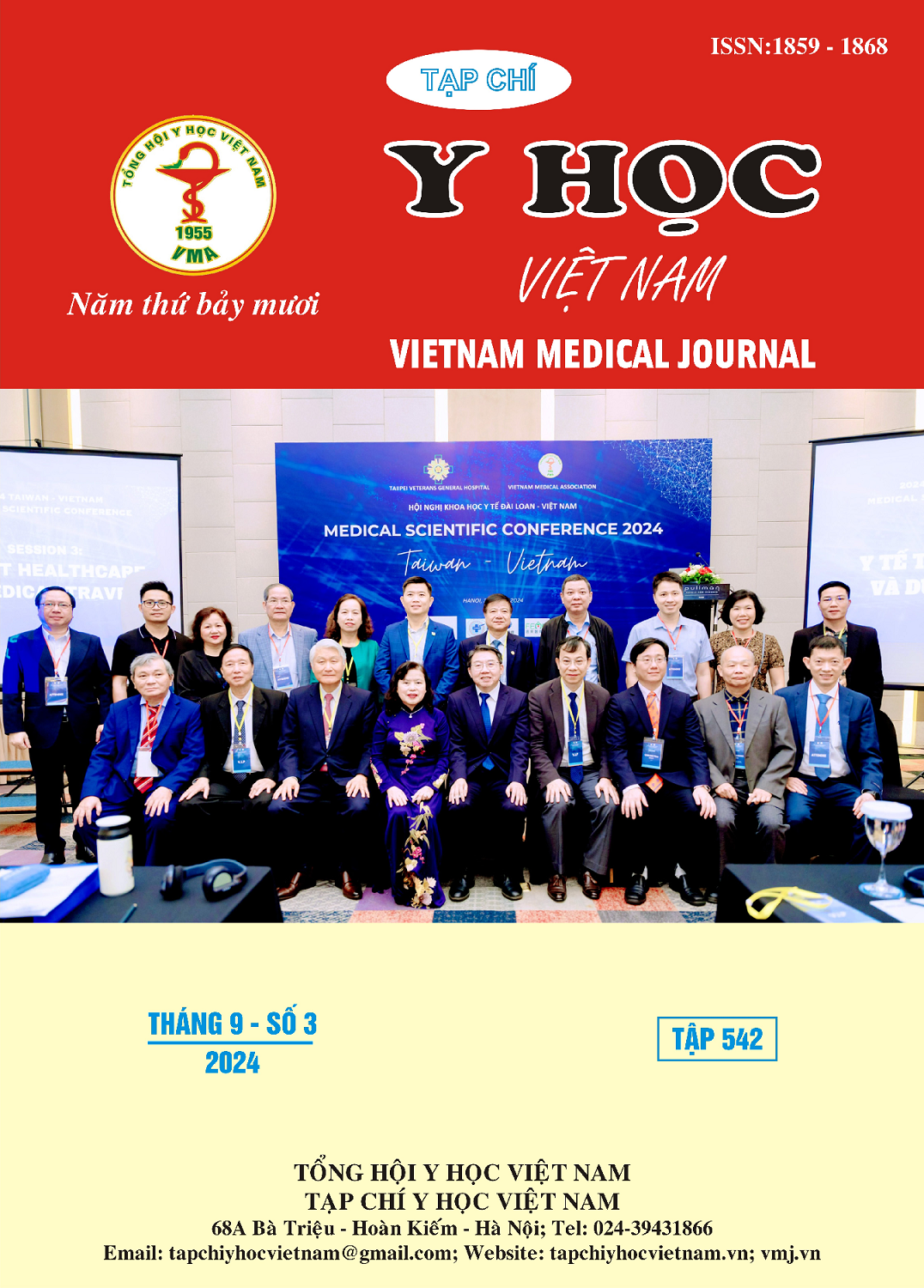ASSESSMENT OF HIGH-RISK HPV INFECTION AND ITS RELATION TO CERVICAL CYTOLOGICAL LESIONS IN WOMEN ATTENDED FOR GYNECOLOGICAL EXAMINATION AT VINMEC TIMES CITY HOSPITAL DURING 2022-2023
Main Article Content
Abstract
Cervical cancer is the fourth most common cancer in women, following breast cancer, colorectal cancer, and lung cancer.1 Human papilloma virus (HPV) infection has been identified as the leading cause of cervical cancer in women, with approximately 99.7% of cervical cancer cases attributed to HPV infection. To date, among more than 200 identified HPV genotypes, several have been found to cause cancer with high frequency in humans. These high-risk types include 16, 18, 31, 33, 35, 39, 45, 51, 52, 56, 58, 59, 66, and 68 (high-risk group), with HPV types 16 and 18 alone accounting for 70% of cervical cancer cases.2 Objectives: 1) To assess the prevalence of high-risk HPV infection in women attended for gynecological examination at Vinmec Times City hospital during 2022-2023; 2) To analyze the relation between high-risk HPV infection and cervical cytological lesions of the infected women. Method: Cross-sectional descriptive study. Results: The prevalence of high-risk HPV infection at Vinmec Times City hospital in 2022-2023 was 20.9%. Among cases of infection with single high-risk HPV, the most frequently detected types were HPV 52 (25.2%), 16 (13.1%), 58 (10.2%), 18 (8.8%), and 39 (8.8%). High-risk HPV infection resulted in significant high probability of cervical cytological lesions (OR: 5.756; 95%, confidence interval 4.24 - 7.81, p < 0.05). High-risk HPV types 16, 18, 31, 39, 52, 56, 58, 66, and 68 in single infection were the main cause of cervical cell lesions (p < 0.05). Furthermore, among women infected with HPV types 31, 58 and 16, the incidence of cervical cell abnormalities was about tenfolds higher, e.g. of respective16.2, 11.8 and 10.9 times, compared to noninfected women. Also, similar results were found with cases of multiple infection, i.e. co-infection with HPV type 16 and 12 other types tenfold increased the cervical cell abnormalities than that of noninfected women. Conclusion: Among 2863 women attended for gynecological examination at Vinmec Times City hospital during 2022-2023, the prevalence of high-risk HPV infection was of 20.9%. High-risk HPV infection increased the risk of cervical cytological lesions by 5.76 times compared to those not infected.
Article Details
Keywords
human papillomavirus, cervical cell lesions.
References
2. X Castellsagué. Natural history and epidemiology of HPV infection and cervical cancer. Journal Gynecologic oncology. 2008;110(3):S4-S7.
3. Trần Thị Thanh Thúy. Tỷ lệ nhiễm hpv và mối liên quan đến các bất thường tế bào cổ tử cung ở bệnh nhân khám phụ khoa tại Bệnh viện K. Tạp chí Y học Việt Nam. 2021;509(1)
4. Vũ Văn Tâm. Nghiên cứu tỷ lệ nhiễm HPV ở bệnh nhân có tổn thương cổ tử cung tại Bệnh viện Phụ Sản Hải Phòng bằng kỹ thuật Real-time PCR và Reverse Dot blot hybridization. Tạp chí Phụ sản. 2017;15(2):135-138.
5. Cao Minh Chu. Nghiên cứu tỉ lệ nhiễm Human Papilloma virus ở phụ nữ Cần Thơ và một số yếu tố liên quan. Tạp chí Y học thực hành. 2013;875(7):41-44.
6. Zhanfei Chen. Epidemiological study of HPV infection in 40,693 women in Putian: a population study based on screening for high-risk HPV infection. BMC Infectious Diseases. 2022; 22(1):893.
7. Dương Minh Long. Tình hình nhiễm HPV cổ tử cung typ nguy cơ cao tại Bệnh viện K. Tạp chí Y học Việt Nam. 2020;497(Số Chuyên đề ung thư):420-424.
8. Nguyễn Ngọc Sơn. Đánh giá mối liên quan giữa tỷ lệ nhiễm HPV và kết quả tế bào học ở phụ nữ khám sàng lọc ung thư cổ tử cung tại một số Bệnh viện khu vực Hà Nội năm 2022-2023. Tạp chí Y Dược học Quân sự. 2023;48(7):113-124.


